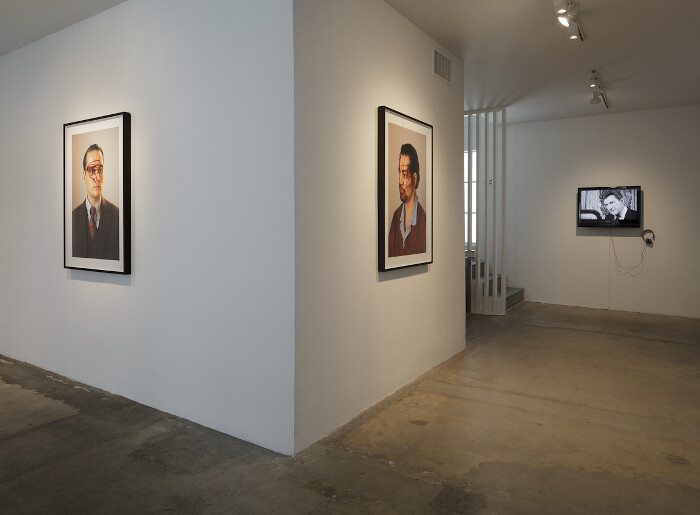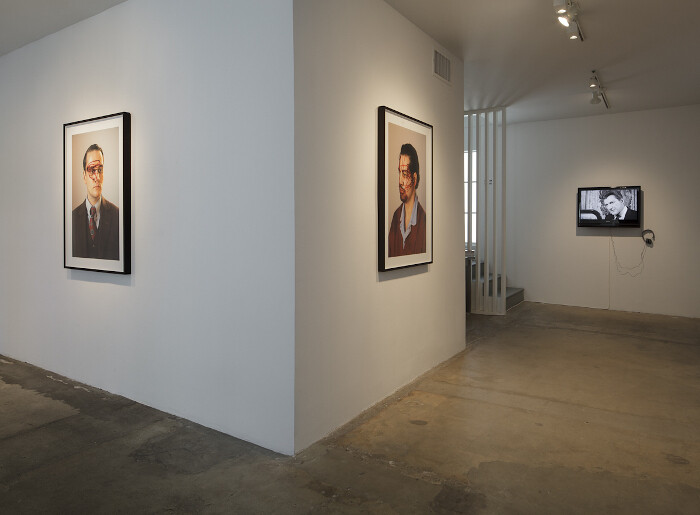For more than ten years Kerry Tribe has carefully exploited the medium of film to coax a poetics of contradictions out of human mechanisms like memory, cognition, and perception. These subjective, internal workings are what we rely on to piece together a knowable world, though few would argue that their objective reality is more than shadowy. Through close examinations of how different types of personal truths are constructed, Tribe’s films intone the disquiet and splendor of confronting dichotomies. They usually do so in the guise of documentary, built around individuals who offer first-person narratives, for example, a precocious child answering existential questions, or a senior with short-term memory loss recounting recent events.
Her newest work, There Will Be _____ (2012), on view at 1301PE in Los Angeles as the centerpiece of an exhibition by the same name, is a little more meta—and also a little more pop. The subject is not a person but a story itself: the legend of Greystone Mansion in Beverly Hills, which at the time of its completion in 1928 was the most expensive home in California. The house was built for the family of an oil tycoon heir, Ned Doheny, Jr., who was found dead in his study only four months after taking up residence there. Though officially deemed a suicide, rumors abound. The widow sold the property in 1955, and, since then, the palatial home has at one time or another invaded the homes of millions, living a monumental afterlife as host to more than 60 Hollywood productions including Death Becomes Her (1992), The Big Lebowski (1998), and There Will Be Blood (2007).
This celluloid legacy is the source material for Tribe’s project. The artist scoured these movies for segments of dialogue to appropriate for her own script: five contrasting interpretations of the events surrounding Doheny’s death, portraying the crimes as fueled by greed, passion, or cowardice. Tribe shot the thirty-minute period piece on location at Greystone Mansion and the result is a Borgesian mosaic of genres. Any line, whether delivered by a stony homicide investigator, a desperate debtor, or a spurned wife, may recall a viewer to a familiar character or cinematic mood—or perhaps to the very film it comes from. But divorced from the cohesive stylistic and narrative contexts of the original movies, everything spoken here resounds like placeholders advancing hollow plots. While the aggregate effect of the project is, obviously, a spiraling destabilization of historical “fact,” perhaps more interesting is what happens on a tonal level. Each vignette maintains a peculiar tension as an amalgamation of moments that are both utterly mundane and uncannily unplaceable.
Unfortunately, the elements of the exhibition that supplement the film don’t amount to anything as compelling. Saleable ephemera include photographs of the actors in costume and hand-collaged, typewritten script excerpts in frames. A more engrossing appendix (but an appendix just the same) is a monitor that loops a “bibliography”: a compilation of all the original clips of co-opted dialogue, edited together in the same sequence as Tribe’s film.
There Will Be _____ doesn’t give the outward impression of a Structuralist film, however, its composition does abide by a set of rules devised by the filmmaker in order to reveal the nature of the medium. And while this piece causes less of an ontological head rush than previous projects by Tribe, it does explicitly extend her exploration of film to an exploration of cinema, an evermore real dimension of popular consciousness.






